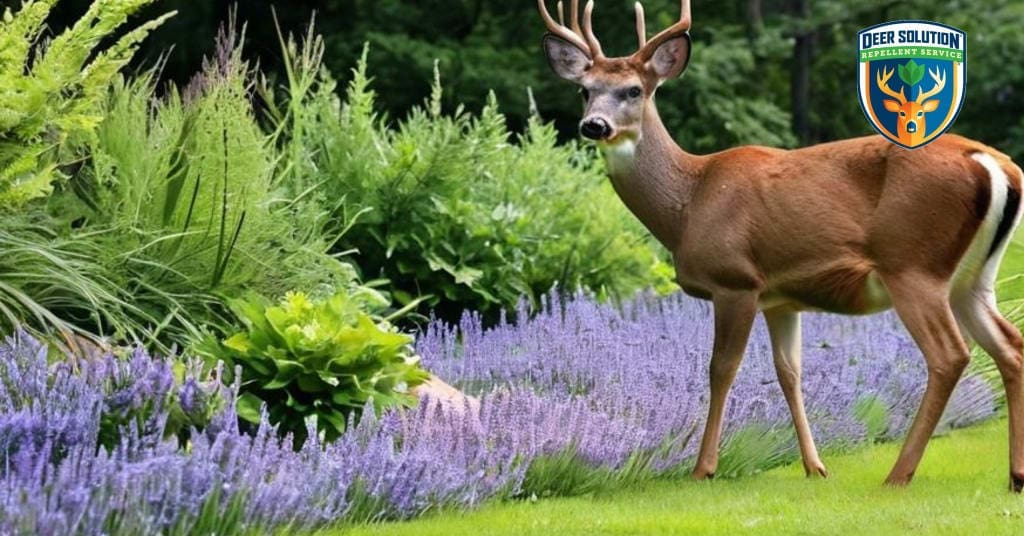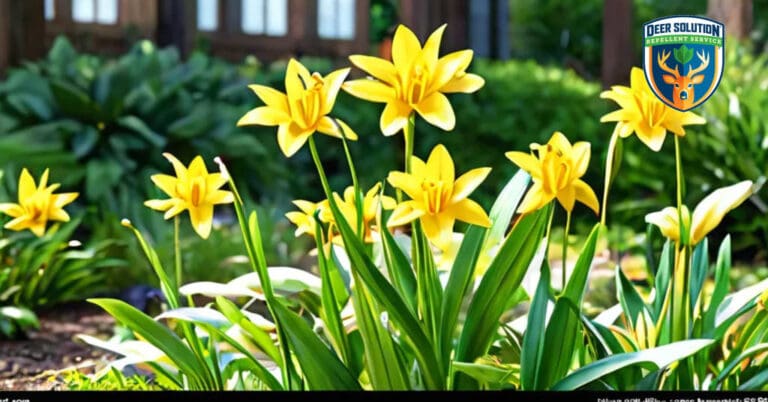Spring marks the arrival of new life in the garden, and for many, the delicate Yellow Trout Lilies are among the most anticipated blooms. But with their tender leaves and early emergence, these spring ephemerals often attract the attention of hungry deer. Do deer eat Yellow Trout Lilies? Understanding their vulnerabilities and learning how to protect them can help you enjoy their beauty without worry. Beyond their charm, Yellow Trout Lilies play a vital ecological role, supporting pollinators and contributing to woodland biodiversity.
Early Blooms, Early Risks
Yellow Trout Lilies (Erythronium americanum) are among the first plants to bloom in spring, making them an easy target for deer. Several factors contribute to their appeal:
- Early Emergence: These plants often appear before other vegetation, standing out to foraging deer.
- Tender Foliage: The soft, succulent leaves are especially palatable to deer in early spring.
- Nutrient-Rich: Yellow Trout Lilies provide valuable nutrients that deer crave after a long winter.
To reduce visibility to deer, consider layering your garden with plants of varying textures and scents. For instance, aromatic species like mint or strong-scented herbs can help mask the lilies’ presence.
Protecting Yellow Trout Lilies in Spring
To safeguard these delicate blooms, it’s crucial to focus on protective measures during their most vulnerable growth periods. Here are some seasonal strategies:
- Apply Repellents: Use eco-friendly deer repellents early in the growing season, reapplying regularly as the plants develop.
- Temporary Barriers: Surround new growth with natural obstacles like sticks or brush to make browsing less appealing.
- Early Planting: Plant Yellow Trout Lilies alongside companion plants to create a protective buffer before they emerge.
Companion Planting for Trout Lily Protection
Companion planting is an effective way to shield Yellow Trout Lilies from deer while enhancing your garden’s aesthetic appeal. Consider surrounding them with deer-resistant plants that thrive in woodland environments:
- Daffodils: Their toxicity makes them unpalatable to deer and a natural deterrent.
- Bloodroot: A native plant with early blooms that blends well with Trout Lilies while deterring deer.
- Ferns: Their texture and height create a natural barrier around delicate flowers.
- Trilliums: Another spring ephemeral that complements Trout Lilies and thrives in similar conditions.
By pairing Yellow Trout Lilies with these protective allies, you can create a garden that is both beautiful and resilient.
Building a Resilient Garden Ecosystem
Yellow Trout Lilies do more than add beauty to your garden—they support early-season pollinators like bees and butterflies, providing essential nectar during a critical time of year. Incorporating these lilies into a diverse planting scheme enhances their ecological contributions while minimizing deer damage. Some tips for building a balanced ecosystem include:
- Native Plant Integration: Combine Trout Lilies with native plants that have evolved alongside local wildlife, naturally deterring deer and supporting pollinators.
- Layered Planting: Create a garden with plants of varying heights and textures to confuse deer and protect vulnerable species.
- Seasonal Diversity: Incorporate plants with staggered bloom times to reduce the impact of browsing on any single species.
Creating Balance in a Deer-Friendly Garden
Yellow Trout Lilies can flourish even in deer-prone areas with thoughtful planning and care. By combining seasonal protections, strategic planting, and companion species, you can safeguard these springtime gems while enhancing your garden’s biodiversity.
For a more comprehensive approach, Deer Solution offers eco-friendly services to help protect your garden from deer. Our tailored strategies ensure your landscape thrives without compromising its natural beauty. With the right support, your Yellow Trout Lilies can bloom in harmony with your garden and the surrounding ecosystem.












